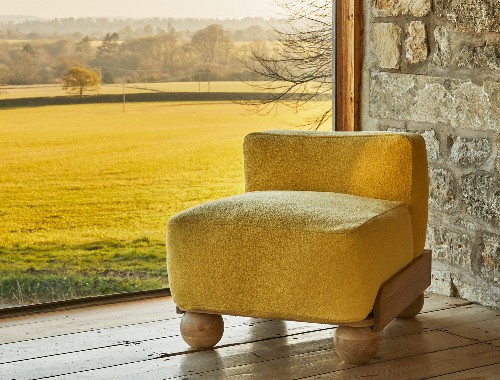Panda’s Bamboo Used in Furniture, Handicrafts and Rural Housing
China’s US$31.8 billion bamboo industry employs almost 10 million people, and – like the plant itself – is growing rapidly. New technologies are expanding its possible uses in construction and other industries.
WWF (World Wide Fund for Nature) staff everywhere are commonly nicknamed Pandas. So perhaps it’s no surprise that we like bamboo. While bamboo has been an integral part of Chinese culture for millennia, it also has a big role to play in the country’s future.
China’s US$31.8 billion bamboo industry employs almost 10 million people, and – like the plant itself – is growing rapidly. New technologies are expanding its possible uses in construction and other industries.
Bamboo, together with rattan, another non-timber forest product widely used in furniture, handicrafts and rural housing in Southeast Asia, is increasingly being seen as an efficient supply of versatile, renewable materials. But if harvested sustainably, they can also contribute to poverty alleviation, green development, landscape restoration, combating climate change, and nature conservation.
WWF’s goal is to create a world with extensive, resilient forest landscapes that benefit biodiversity, people and climate – and bamboo and rattan, as two of the most valuable and versatile non-timber forest products, can be part of the solution.
Bamboos grow in forests across the tropics and sub-tropics, while rattans – vine-like climbing palms – are found in tropical forests in much of Asia, Africa and Australasia. Both provide an important source of food and habitat for many species (not just pandas!), and an important resource for communities living in and around these forests.
Harvested sustainably, bamboo and rattan can provide vital income for these communities. And they can also provide a fast-growing alternative to timber, both for local use as fuel and building materials and in global supply chains. By adding economic value to the forest, they can help reduce the pressure to clear forests for other land uses.
WWF has been supporting a number of sustainable bamboo and rattan projects, particularly in the Greater Mekong region – where rattan plays a big role in rural peoples’ livelihoods, but supplies are declining because of deforestation.
By helping local people improve production practices and access international markets as part of a global industry valued at an estimated $4 billion, these projects are a step toward improving lives for local people but also helping to protect forests and the wildlife they support.
In Laos, for example, villagers in Bolikhamxay province have seen their incomes more than triple since they began producing the world’s first rattan certified by the Forest Stewardship Council (FSC). Smallholders in Borneo are also producing FSC-certified rattan, helping to protect old-growth forest that provides suitable habitat for orang-utans and many other species.
In Cambodia, families are harvesting bamboo to make incense sticks and cultivating rattan seedlings for furniture within community-owned forests. Because the forests provide a sustainable year-around income, the communities actively defend them against fires, poaching, and illegal logging and land grabs.
A number of companies have been looking at bamboo as an alternative source of fiber that can take pressure off forests – Kimberly-Clark, for example, has been incorporating FSC-certified bamboo into a number of its tissue brands. But businesses could be doing much more.
This is what WWF will be advocating for at the Global Bamboo and Rattan Congress next week in Beijing, which will bring together people involved in the bamboo and rattan industries from more than 40 countries.
By building and driving innovative solutions – from supporting sustainable rattan harvesting in wildlife-rich forests, to bamboo plantations that help restore highly degraded soils – businesses can help secure their own supplies of renewable materials in a resource-constrained world, while enabling people and nature to thrive together. Together we can sow the seeds of change.
(Source:atimes.com)
-

National Bureau of Statistics: The retail sales of furniture in the first three quarters reached 120.5 billion, an increase of 20.7%
-

Malaysia has become the top ten furniture exporters of the world
-

North American furniture giant Flexsteel enters the field of solid wood with new furniture series
-

British designer FRED RIGBY reveals debut furniture collection-everyday

 沪公网安备31010402003309号
沪公网安备31010402003309号



